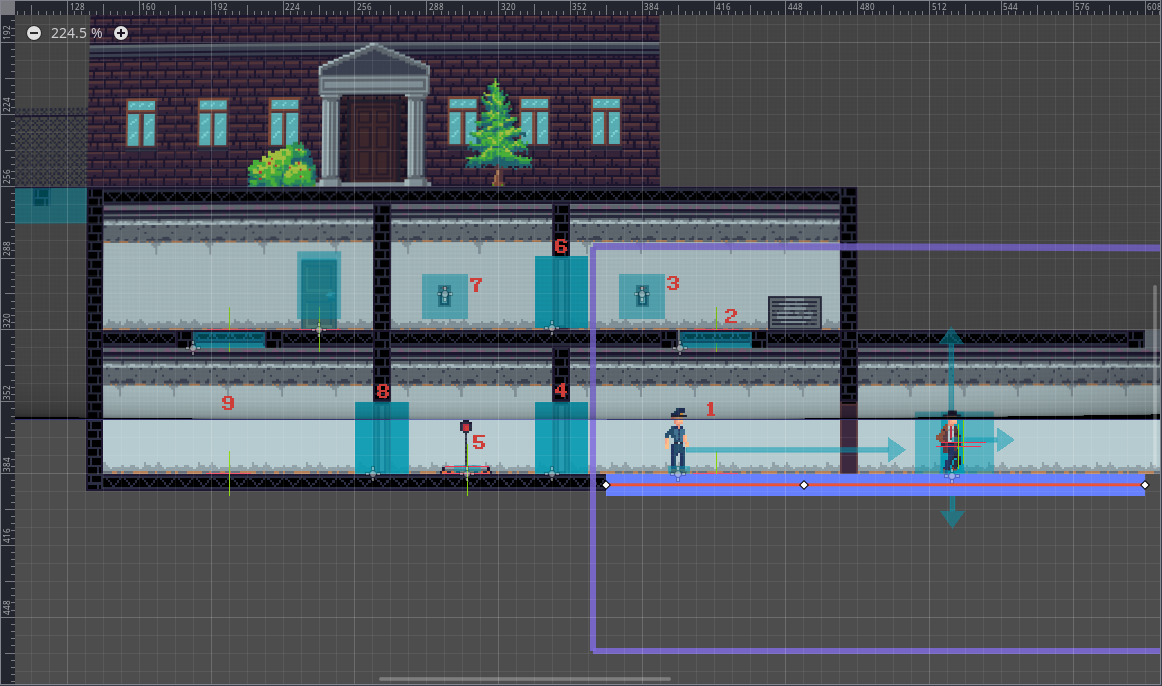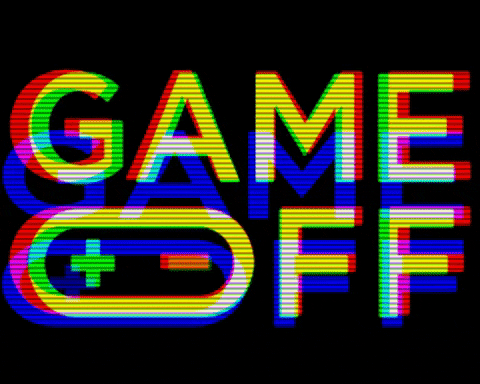Devlog: This Week on Moonshot #3
In this issue of the Devlog we want to give you some insights into our level design process as well as talk about world design in general.
World Design
Moonshot is set in three different cultures. Besides the music, this should also be reflected in the level designs. A simple way to do this are the skyboxes, which represent the different cultures.
The rural Ustria, the bluish US metropolis and the red Soviet metropolis. The color mood together with the music, the western and eastern guards and the objects distributed over the level, some of which are unique, should hide the fact that the same textures are often used.
In addition to the cultural groups, the lighting design plays a big role not only in the visuals. The visibility of the player has an influence on whether he is seen by the security cameras or guards. For this purpose, a distinction is made between 3 visibility levels: Full light, barely visible and darkness. For example, a guard will sound an alarm if the player is in full light and within the guard's field of view. While a guard who sees the player in barely visible light only becomes suspicious. To enhance the light effect, all missions are set at night and the level is artificially darkened. To create a little variety there are three different levels: Dusk, Night and Dawn.

Level Design
To keep the level design consistent, we have developed a "Puzzle Mechanic Playbook". Here are some extracts from it and insights into the level creation process.
A level at Moonshot consists of three main building blocks at the beginning of the design process:
- The Goal
- The Challenge
- Losing Conditions
The Goal or Mission Objective is derived from the story background. We currently support the following variants: information gathering missions (safe-cracking and photo missions), sabotage, kidnapping and theft missions. Challenges are the obstacles the player has to overcome in order to fulfil the mission goal. To make the obstacles a bit harder and add some pressure on the player there are some losing constraints in the form of player detections - e.g. Security cameras or guards.
Every level shall rely on two main puzzle mechanics only. This gives the player a better feeling on how to handle situations, does not overload the level and make the levels overall more diverse. Level designs shall be designed “form follow function” approach in contrast to what we had in the game jam. Design the puzzles first and afterwards design the rooms.
Example:
 In the screenshot from the Godot Editor we will show how an puzzle could be designed. In this example the player wants to reach the room 9. In order to that the has to overcome the guard first by stunning him. After that the player will find out that door 4 is locked and must be opened by a switch. To do this, he can climb up on position 2 and press switch 3. Switch 3 in turn opens door 4. At position 5 there is a pressure plate button. As long as a weight is on it, door 6 is open. If the weight is removed, the door closes again. To get to switch 7, which opens the last door, the player must lay the tased guards body on the pressure plate button. Typically such a puzzle design is put on paper first.
In the screenshot from the Godot Editor we will show how an puzzle could be designed. In this example the player wants to reach the room 9. In order to that the has to overcome the guard first by stunning him. After that the player will find out that door 4 is locked and must be opened by a switch. To do this, he can climb up on position 2 and press switch 3. Switch 3 in turn opens door 4. At position 5 there is a pressure plate button. As long as a weight is on it, door 6 is open. If the weight is removed, the door closes again. To get to switch 7, which opens the last door, the player must lay the tased guards body on the pressure plate button. Typically such a puzzle design is put on paper first.
Thank you for reading!

Support us
Links: Wishlist on Steam | Discuss with us on Discord | Follow us on Twitter
Moonshot: The Great Espionage (Demo)
Stealth platformer game settled in the 60s moon race era
| Status | Released |
| Author | Nimble Beasts |
| Genre | Platformer |
| Tags | 2D, DRM Free, Pixel Art, Stealth |
More posts
- Devlog: Beta 1 is hereApr 17, 2021
- Devlog: This Week on Moonshot #2Jan 16, 2021
- Devlog: This Week on Moonshot #1Dec 19, 2020
- Moonshot: Going Full SteamDec 09, 2020
- Moonshot Launch!Nov 29, 2020



Leave a comment
Log in with itch.io to leave a comment.